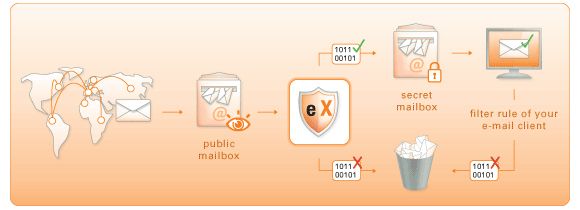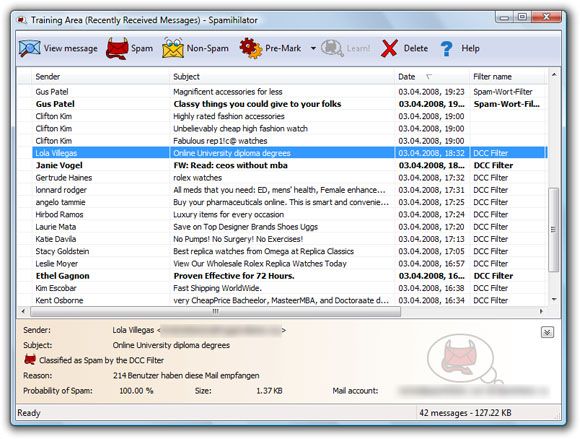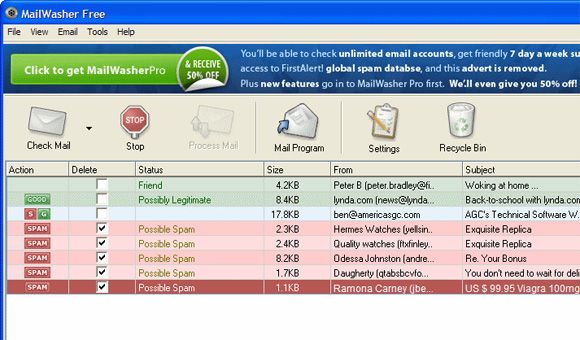In 1978 Gary Thuerk sent the first ever spam email advertising a new range of microcomputers to 400 users of the ARPANET service. In 2010 we're still looking for a solution to this increasingly frustrating problem, and most of us don't want to pay.
We get quite a lot of spam here at MakeUseOf, but then so does anyone with an email address these days. Even if your email's not public, many users get targeted by so-called "dictionary" attacks against their email providers. One solution is to use temporary email addresses, but if you're already receiving a lot of spam then the problem's going to remain.
So if you're can't see your inbox for junk and need a break from hitting "delete" then maybe you should try one of these free services.
Gmail
Ok, so it's not a spam blocker per se - but it's one of the many features you can take advantage of and it gets the job done. Gmail uses a spam filter known as Postini, which is usually a commercial affair. By using Gmail you're essentially getting a very expensive spam filter completely free of charge.
The beauty of Google's email service lies in the ability to connect your bog-standard POP3 accounts, allowing you to "collect" your mail from Google's web interface. Gmail's advanced spam filtration will help filter all incoming messages, and any detections will be labelled accordingly and kept out of sight.
Once you've registered (choose a good spam-proof address), you can add an address under the Accounts tab in Gmail's Settings. You won't need to go quoting your new email, as you'll still effectively be using your old accounts.
Using the Send mail as tool in the same configuration panel will allow you to send email from the addresses you've added too, and all you need to check and send mail is a web browser.
Spamfence
What's better than one email address? Two, it would seem.
With integrated virus protection, this spam filter works by forwarding mail from your main (probably public and spam-riddled) inbox through the Spamfence filters and on to another private "clean" email address. Any messages that are detected as spam along the way will be marked accordingly, and you have full control over what is done with these messages.
The service adds a subject header to each message, so if you want you can allow everything through and make your own rules up with your client. Think of the extra virus protection as a free gift, not that the service will cost you anything.
Spamihilator
If you're a Windows user with a mail client such as Outlook, Thunderbird or Eudora then chances are you'll be looking at a solution you can download and run alongside your existing setup. Spamihilator is just that, and it even claims to have a 98% success rate.
The filter sits between the big bad internet and your client, removing messages it deems to be spam. You can also train this filter, so after a while it'll know what to do based on your previous decisions. There's a training area to help get the learning process started, and you can even add specific words to a blacklist (thus removing future emails featuring these words).
That's not all, there's also link filtration and the ability to download plugins. Spamihilator provides a load of protection from spam, and it's completely free.
MailWasher Free
The only program on this list with a commercial bigger brother, MailWasher Free is a simple program that can help clean up your POP3, IMAP or webmail email address. Download the program, connect to your email and preview as many incoming messages as you like before deciding whether you want to download them or not.
Using a similar Bayesian filter as Spamihilator, this program will also learn from your actions and train itself to adhere to your rules once you've made a few spam-busting decisions.
Being the "Free" version, you're limited to a maximum of 1 email account (and lose out on search, a customizable interface and updates). This isn't so bad, the free version really is free (forever) and if you do decide you really like it, then you could always treat yourself.
Conclusion
Spam's just as annoying as it ever was, but with a couple of clever moves on your part you can help minimize it. If you're feeling a little more adventurous, check out Ryan's guide to setting up SpamAssassin on Windows. And don't forget to mix it up, for example connecting your POP3 mailboxes to a Gmail account, through Spamfence and then onto another clean account will probably work wonders for your junk email problems.




